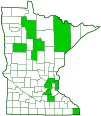slender smoothtail
(Epistrophella emarginata)
Conservation • Description • Habitat • Ecology • Distribution • Taxonomy
Conservation Status |
|
|||||||
| IUCN Red List | not listed |
|||||||
| NatureServe | NNR - Unranked SNR - Unranked |
|||||||
| Minnesota | not listed |
|||||||
Description |
||
Slender smoothtail is a small to medium-sized hoverfly. It occurs in North America from Quebec to Manitoba south to Florida and Texas. A disjunct (unconnected) population occurs in the Pacific Northwest. It is most common in Quebec and in the bordering U.S. states. It is not common in Minnesota. Adults are found from early May to October in hardwood forests, meadows, and fens, and near lake shores. They feed on flower nectar and pollen. Larvae prey on a wide variety of aphids. Adults are 5⁄16″ to ½″ (7.8 to 11.7 mm) in length. They are black and shiny with bright yellow markings. As the common name suggests, they are slender-bodied. The head is hemispherical and wider than the thorax. The back of the head is strongly concave and closely appressed to the thorax. There are two large compound eyes on the sides of the head and three small simple eyes (ocelli) in a triangle on top of the head. The compound eyes are bare, with no hairs. On the male they meet at the top of the head. On the female they do not. The face is entirely yellow. The protruding mouthpart (proboscis) is short and fleshy. The antennae are short, shorter than the head, and have just three segments. The color is variable, from entirely black to orange with a black just on the upper margin. On the third segment there is a stiff, forward-pointing bristle (arista). The arista is bare, not feather-like (plumose). The thorax is large and has three segments. Each segment has four principal exoskeletal plates, one above, one below, and one on each side. The upper (dorsal) plates, from front to rear, are the prescutum, scutum, and scutellum. There is a broad, sharply defined, bright yellow, longitudinal stripe on each side of the scutum. On each side of the scutum, in the shoulder (humeral) area just behind the head, there is small plate (postpronotum). The postpronotum is bare, with no hairs or bristles. Unfortunately, this is not visible without first removing the fly’s head. The scutellum is large, rounded, and bright yellow. The lower front plate of the middle segment (katepisternum) has an upper and a lower patch of hairs. The two patches are distinctly separated. The abdomen has five visible segments on both sexes. The first segment (A1) is short and black above. A2 through A4 each have a pair of bright yellow spots above. The size of the spots is variable. On A2 the spots are usually small, distinctly separated in the middle, and do not reach the lateral margin. Often they are large and reach the lateral margin. Rarely they are small and reach the lateral margin. On A3 there is sometimes a narrow yellow band on the front margin. The spots are large and usually narrowly separated in the middle, sometimes joined in the middle. They usually narrowly touch the lateral margin. Sometimes there is a narrow yellow band on the rear margin. On A4 the spots are large. They are rarely joined in the middle and usually broadly touch the lateral margin. The yellow band on the rear margin is narrow but broader than that on A3. A5 may be yellow at the front corners or yellow with a broad black inverted U or V. The wings are clear. The small membranous lobe (calypter) at the base of the forewing that covers the balancing organ (haltere) is has two lobes. The lower lobe is hairless above. Beyond that, the hairiness of the wing is extremely variable. The vein on the leading edge of the wing (costa) ends before the wing tip. There is a false vein (spurious vein) between the radius (R) and media (M) veins. The anal cell is long and is closed near the wing margin. The marginal, R1, R5, and M2 cells are also closed. The legs are variable in color. On some specimens they are almost entirely yellow, with just the first segment (coxa) and the fifth part (tarsus) on the hind leg dark. There is often a dark brown ring on the lower half of the third segment (femur) of the hind leg. The fourth segment of the hind leg is often brownish toward the tip. The description above refers to the eastern population. Almost all specimens in the west have abdominal spots well separated, and extensively hairy wings. In the east, many specimens have abdominal spots connected, and wings extensively hairy. The color of legs and upper face is also variable. Some specimens have different combinations of these characters. DNA studies suggest that Epistrophella emarginata is a complex of two or more species. |
||
Size |
||
Total length: 5⁄16″ to ½″ (7.8 to 11.7 mm) |
||
Similar Species |
||
Habitat |
||
Hardwood forests, meadows, and fens, and lake shores |
||
Ecology |
||
Season |
||
Probably one generation per year: Early May to October |
||
Behavior |
||
|
||
Life Cycle |
||
|
||
Larva Food |
||
Aphids |
||
Adult Food |
||
Flower nectar and pollen |
||
Distribution |
||||
|
Sources Telford, Horace S.. (1939). The Syrphidae of Minnesota. University of Minnesota. Minnesota Agricultural Experiment Station. Skevington, J. H., Locke, M. M., Moran, K., Marshall, S. A., Crins, W. J., Young, A. D. (2019). Field Guide to the Flower Flies of Northeastern North America. United States: Princeton University Press. |
|||
| 8/7/2022 | ||||
Occurrence |
||||
Not common in Minnesota |
||||
Taxonomy |
|||
Order |
Diptera (Flies) | ||
Suborder |
Brachycera | ||
| Infraorder | Cyclorrhapha | ||
| Zoosection | Aschiza | ||
Family |
Syrphidae (Hover Flies) | ||
Subfamily |
Syrphinae (Typical Hover Flies) | ||
Tribe |
Syrphini | ||
Genus |
Epistrophella | ||
In 2008 the genus Epistrophella was formally split from the genus Epistrophe. The new genus contains just three species, only one of which occurs in North America. |
|||
Synonyms |
|||
Metasyrphus emarginatus Scaeva emarginata Syrphus disjectus Syrphus disjunctus Syrphus emarginatus Syrphus infuscata Syrphus infuscatus Syrphus invigorus Syrphus maculifrons Syrphus weborgi Xanthogramma aenea Xanthogramma divisa Xanthogramma emarginata Xanthogramma felix Xanthogramma fragila |
|||
Common Names |
|||
slender smoothtail |
|||
Glossary
Arista
A large bristle on the upper side of the third segment of the antenna of a fly. Plural: aristae.
Calypter
On flies: one of two small membranous lobes at the base of the forewing that covers the haltere.
Costa
On ferns: The central axis of a pinna, to which pinnules are attached. On mosses: the central axis (midvein) of a leaf. On insects: The vein on the leading edge of the forewing.
Femur
On insects and arachnids, the third, largest, most robust segment of the leg, coming immediately before the tibia. On humans, the thigh bone.
Halteres
In flies: a pair of knob-like structures on the thorax representing hind wings that are used for balance.
Ocellus
Simple eye; an eye with a single lens. Plural: ocelli.
Proboscis
The protruding mouthpart(s) of a sucking insect.
Scutellum
The exoskeletal plate covering the rearward (posterior) part of the middle segment of the thorax in some insects. In Coleoptera, Hemiptera, and Homoptera, the dorsal, often triangular plate behind the pronotum and between the bases of the front wings. In Diptera, the exoskeletal plate between the abdomen and the thorax.
Scutum
The forward (anterior) portion of the middle segment of the thorax (mesonotum) in insects and some arachnids.
Tarsus
On insects, the last two to five subdivisions of the leg, attached to the tibia; the foot. On spiders, the last segment of the leg. Plural: tarsi.
Tibia
The fourth segment of an insect leg, after the femur and before the tarsus (foot). The fifth segment of a spider leg or palp. Plural: tibiae.
Visitor Photos |
|||||
Share your photo of this insect. |
|||||
| This button not working for you? Simply email us at info@MinnesotaSeasons.com. Attach one or more photos and, if you like, a caption. |
|||||
Alfredo Colon |
|||||
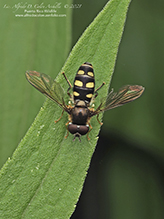 |
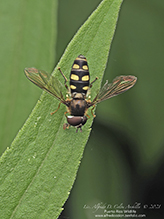 |
||||
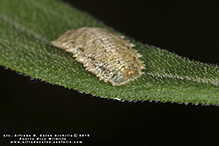 |
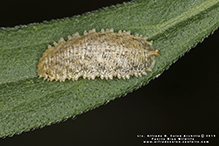 |
||||
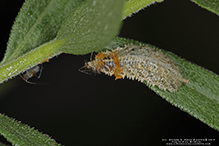 |
|||||
MinnesotaSeasons.com Photos |
|||||
|
|||||

Slideshows |
||

Visitor Videos |
|||
Share your video of this insect. |
|||
| This button not working for you? Simply email us at info@MinnesotaSeasons.com. Attach a video, a YouTube link, or a cloud storage link. |
|||
Other Videos |
|||


Created: 1/16/2021
Last Updated:
